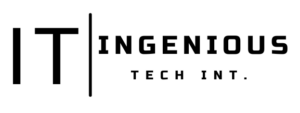key takeaways
Brute Force Attacks on Passwords involve systematically trying every possible password, posing significant risks, including unauthorized access and data breaches.
Hackers gain from these attacks by profiting from ads, stealing personal data, spreading malware, hijacking systems, or ruining a website’s reputation.
Implementing security measures such as strong passwords, Multi-Factor Authentication, rate limiting, CAPTCHA challenges, and security software is crucial for protection.
Professionals can enhance password security through passive backend protections like encryption and hashing, as well as active IT support measures like intrusion detection systems.
Educating employees on cybersecurity best practices is essential to bolster defenses against Brute Force Attacks and ensure overall digital safety.
In today’s digital landscape, safeguarding our online accounts is of utmost importance. This article delves into the world of Brute Force Attacks, shedding light on their mechanisms, the risks they pose, and viable solutions to protect your digital presence.
Brute Force Attack on Passwords is a malicious attempt to gain unauthorized access to an account by systematically trying every possible password until the correct one is discovered. It’s akin to a relentless intruder trying every key to unlock a door.
Understanding Brute Force Attacks
How Brute Force Attacks Work
Brute Force Attacks usually employ automated scripts or software that tirelessly attempt various combinations of usernames and passwords until they break through security. Hackers leverage these tools to exploit vulnerabilities in login pages or security protocols.
Risks Associated with Brute Force Attacks
Brute force attacks can lead to unauthorized access, data breaches, financial loss, reputation damage, and legal consequences.
What do hackers gain from Brute Force Attacks?
Profiting from Ads or Collecting Activity Data
Some attackers aim to profit from their conquests by either generating ad revenue through your accounts or surreptitiously collecting your online activity data.
Stealing Personal Data and Valuables
Others have more sinister motives, stealing personal data and valuables such as financial information, leading to potential identity theft or monetary loss.
Spreading Malware to Cause Disruptions for the Sake of It
Certain malicious actors use brute force to infiltrate your system, planting malware that disrupts operations, often without any specific goal other than causing chaos.
Hijacking Your System for Malicious Activity
Some hackers may hijack your system for broader malicious activities like launching cyberattacks on other targets, leaving you as an unwitting accomplice.
Ruining a Website’s Reputation
Businesses also face the risk of having their website’s reputation tarnished due to data breaches caused by brute force attacks.
Types of Brute Force Attacks
There are various types of Brute Force Attacks, including dictionary attacks, credential stuffing, reverse brute force attacks, and more.
Tools Aid Brute Force Attempts
Attackers use tools like Hydra, Aircrack-ng, and John the Ripper to execute brute force attacks more efficiently.
Protecting Against Brute Force Attacks
Steps to Protect Passwords for Professionals
To ensure the security of sensitive data and prevent unauthorized access, professionals must implement robust measures to safeguard their passwords and the systems they access.
Passive Backend Protections for Passwords
Implement passive backend protections like encryption and hashing to store passwords securely.
Active IT Support Protections for Passwords
Provide active IT support measures such as intrusion detection systems and regular security audits.
Multi-Factor Authentication
Implement Multi-Factor Authentication (MFA) to add an extra layer of security, making it significantly harder for attackers to gain access.
Rate Limiting
Apply rate limiting on login attempts, restricting the number of tries within a specific time frame, thus mitigating brute force attacks.
Captcha Challenges
Utilize CAPTCHA challenges to differentiate between humans and automated scripts, making it difficult for bots to proceed.
Security Software
Invest in reliable security software that can detect and block brute force attacks in real-time, monitoring login attempts for suspicious patterns.
Educate Employees
Lastly, educating employees on cybersecurity best practices is crucial for overall protection against brute force attacks.
Wrap Up
In an era where digital security is paramount, understanding and defending against Brute Force Attacks is vital. By following best practices such as employing strong passwords, enabling Multi-Factor Authentication, implementing rate limiting, utilizing CAPTCHA challenges, and investing in security software, you can fortify your defenses and protect your digital world.
FAQs
What is the success rate of brute force attacks?
The success rate of brute force attacks depends on factors like password complexity and the attacker’s resources. However, with strong passwords and security measures in place, the success rate is significantly reduced.
How often should I change my passwords to stay safe?
It’s advisable to change your passwords regularly, at least every three to six months, to enhance security.
Can I use password manager apps to protect against brute force attacks?
Yes, password manager apps generate and store complex passwords, making it difficult for attackers to guess. They can enhance your security.
Is multi-factor authentication necessary for all accounts?
While it’s not mandatory for all accounts, enabling MFA on your most critical accounts, such as email and financial accounts, is highly recommended.
What should I do if I suspect a brute force attack on my account?
If you suspect a brute force attack, immediately change your password to a stronger one and enable multi-factor authentication if not already in place. Additionally, inform the account provider about the suspicious activity.


